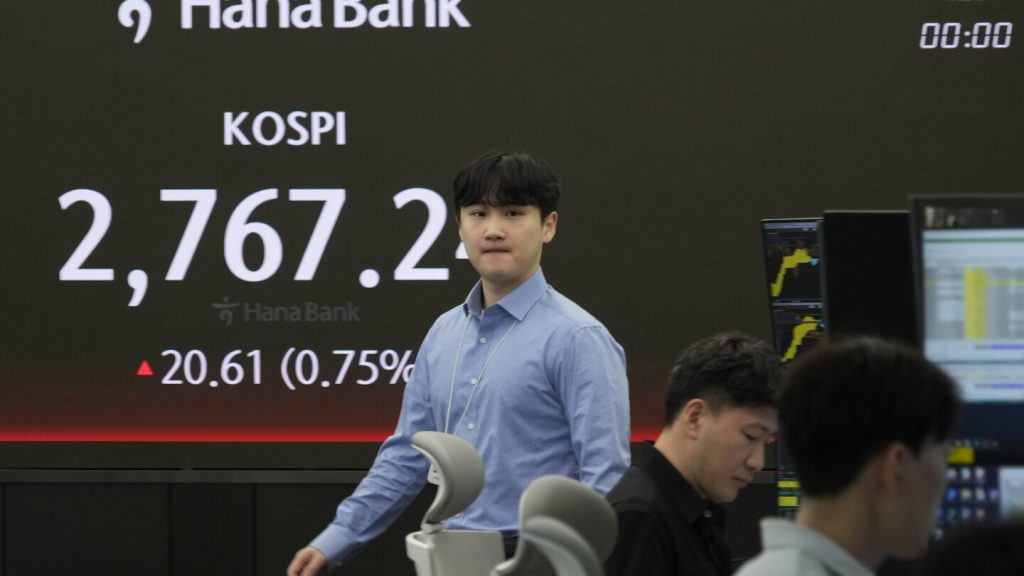Asian shares were mixed on Monday, with Shanghai gaining 1% after surveys showed improvements in manufacturing conditions in China. Sydney and Hong Kong were closed for the Easter Monday holiday. Tokyo’s Nikkei 225 fell 1.4%, reflecting a decline in sentiment among large manufacturers in Japan. The Shanghai Composite index gained 1% following positive survey data released by China’s National Bureau of Statistics. The country’s official manufacturing PMI for March was reported at 50.8, its strongest reading since 2023. A separate survey showed the Caixin/S&P Global China manufacturing purchasing managers’ index at 51.1, its highest since February 2023. Chinese manufacturers increased production and purchasing levels amid improved optimism.
The World Bank released a report forecasting that economies in developing countries of East Asia and the Pacific will grow 4.5% this year, down from 5.1% in 2023. China’s economy is estimated to expand at a 4.5% annual pace in 2023, lower than the previous year. In other parts of Asia, South Korea’s Kospi edged higher, while the Sensex in India was up 0.6%. The SET in Bangkok rose 0.2%. European and U.S. markets were closed on Friday, with European markets remaining closed on Monday while U.S. markets were set to reopen. Wall Street had a winning month and quarter, with the S&P 500 and Dow Jones Industrial Average setting records. The Nasdaq composite dipped slightly, while the U.S. dollar rose against the Japanese yen and the euro dipped.
The U.S. stock market has been on a strong run since late October, with the S&P 500 capping its fifth straight winning month. Economic data to be released in the U.S. this week includes trade, jobless claims, vehicle sales, nonfarm payrolls, and unemployment statistics. U.S. benchmark crude oil gained to $83.43 per barrel in electronic trading on the New York Mercantile Exchange. Brent crude, the international standard, was also up. With inflation hopefully cooling from its peak, the Federal Reserve has indicated it may cut interest rates later in the year. The positive economic outlook in the U.S. has contributed to the stock market’s steady climb.
In response to improvements in manufacturing conditions, Chinese manufacturers have increased production and purchasing levels, leading to a rise in optimism. However, challenges remain in achieving China’s target of around 5% economic growth, given constraints on employment and low prices. Efforts will be needed to make growth more efficient and improve its quality. The World Bank’s forecast of 4.5% growth for developing economies in East Asia and the Pacific, as well as China’s estimated 4.5% annual expansion, suggest a slightly slower pace compared to previous years. Other Asian markets, including South Korea, India, and Thailand, also saw positive movements in the wake of the holiday closures in Sydney, Hong Kong, Europe, and the U.S.
Overall, global markets are responding positively to the recent economic data, with Wall Street setting records and U.S. markets expected to reopen after the holiday closures. The steady growth in the U.S. economy, despite high interest rates meant to control inflation, has bolstered investor confidence. The upcoming economic data releases in the U.S. will provide further insight into the country’s economic performance and potential future trends. The stability in the oil market, with both U.S. benchmark and Brent crude prices rising, reflects broader market optimism. As the global economy continues to recover from the challenges of the past few years, investors are closely watching for any signs of further growth and stability in key markets such as China and the U.S.


